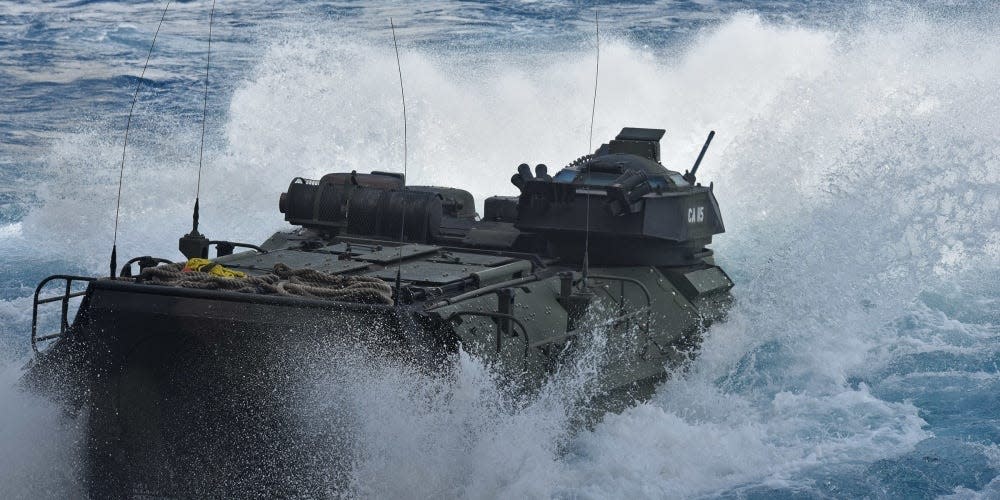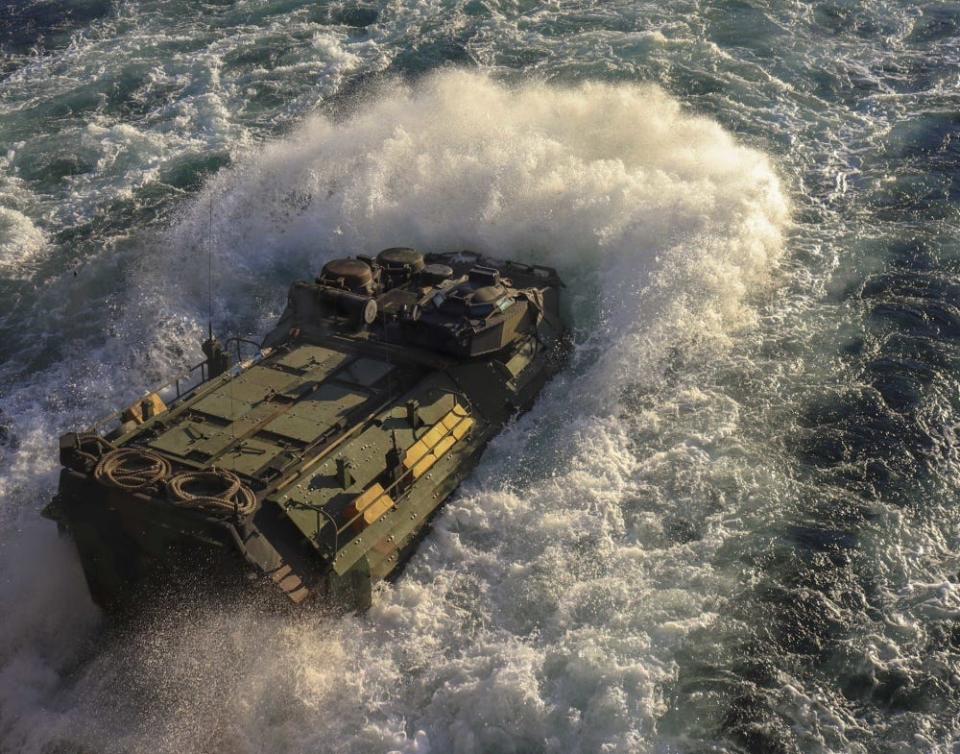Marines who drowned when their AAV sank didn't have breathing devices because the Corps canceled the program to cut costs

A Marine Corps assault amphibious vehicle sank last summer, and nine people drowned.
Troops didn't have breathing devices because the Corps cut the program years ago to save money.
In the wake of the accident, the Corps has changed its mind and is bringing these devices back.
Related: Navy SEALs explain why over-planning can be dangerous
When a Marine Corps assault amphibious vehicle sank off the coast of California last summer, nine people drowned.
Among the many problems the Corps is trying to rectify in the wake of this accident, troops inside did not have breathing devices.
The embarked service members were not carrying the devices because the Corps made the decision to get rid of them several years ago after assessing that program's $15.9 million cost outweighed concerns about a possible catastrophe, two Corps officials told Insider.
Embarked Marines used to carry Waterborne Egress Capability (WEC) breathing systems as a component of their LPU-41 life preservers, Insider learned. It's unclear if these were widely and properly distributed.
In the event that an AAV sank, the bottled breathing devices would provide up to five minutes of air.
It is not a lot of time, but it is more than enough time to remove your gear, get your bearings, and take action, a Marine official, a former division commander, said.
Troops trying to escape a submerged vehicle can easily find themselves disoriented and struggling with their heavy gear as they desperately fight to reach the surface. A few extra minutes of air beyond what is in their lungs might be the difference between staying alive and dying.
The WEC bottled breathing device program was canceled in 2015, just four years after it began, as the Corps grappled with budget concerns.
"So 2011 to 2015, we have this program," another Marine official, a former Marine Expeditionary Unit commander, said. "2015, if you recall where we were fiscally in 2015, we're in sequestration."
During the Obama administration, a deep budget cut known as sequestration impacted all federal spending, including that of the Department of Defense.
"I'm a big believer in the bottles," the former division commander said. "But, in 2015, we were scrambling for money, looking under the cushions of the sofas, trying to make ends meet. This was a convenient thing."
The former MEU commander explained to Insider that the Marine Corps measures risk by likelihood of occurrence and severity of outcome.
In this case, a decision was made that an accident requiring supplemental air was unlikely given the limited number and nature of fatal AAV accidents. The decision to discontinue the WEC bottled breathing device program was reassessed after tragedy struck last summer.

A tragic mishap
Last July, an AAV assigned to Bravo Company, Battalion Landing Team 1st Battalion, 4th Marines, part of the 15th Marine Expeditionary Unit, sank off the coast of California as it returned to the amphibious transport dock USS Somerset from San Clemente Island during a training exercise.
Failure after failure ended in disaster. Eight embarked Marines and a Navy sailor drowned, making this incident the deadliest AAV training accident in the vehicle's decades of service.
The commander of US Marine Corps Pacific blamed the sinking and the resulting deaths on "a confluence of human and mechanical failures" in a statement attached to the investigation. He added that "this tragic mishap was preventable."
The biggest problem was that the vehicle, which was initially carrying 16 service members, was not evacuated until it was too late. The vehicle sank with 11 people still on board. All but one service member made it out, but only three made it to the surface.
The three service members who made it to the surface each suffered drowning injuries. One did not survive.
As for the troops who died without reaching the surface, all of them were wearing body armor. Some had tried to drop their gear but were unsuccessful. In addition to the problem of excess weight, the life preservers they had on were not as effective as they would normally be given the depth at which they were operated.
The Marine officials Insider talked to about the accident did not say whether or not WEC breathing devices would have made a difference and saved lives in this situation. Though the investigation was silent on this point, the Corps has, as a result of this terrible accident, changed its mind on the program, the officials said.
"It has been reinstated," the former MEU commander revealed. "This year, we will field WEC bottles for all our MEU units."
A Marine Corps spokesman confirmed the previous use, cancellation, and return of the WEC program.
AAV crews are temporarily using Helicopter Aircrew Breathing Devices (HABD) borrowed from the Marine Expeditionary Force air wings, the former MEU commander said, but the WEC devices will eventually be brought back for AAV passengers and crews.
"We have on contract now - and we'll bring back as a program of record - the full WEC system, which includes the bottles [and] the charging station for the bottles," he said, adding that "it will be a requirement to be trained and equipped with a Waterborne Egress Capability device to be in the back of an AAV or ACV."
The ACV, or Amphibious Combat Vehicle, is the replacement for the ageing fleet of AAVs, some of which have been around since the mid-1970s. The Corps began rolling them out ahead of schedule last October.
Since the deadly accident last summer that claimed the lives of nine service members, the Marine Corps has not conducted any waterborne operations with its amphibious vehicles. These are not expected to resume until the service has finished making changes to the way these vehicles are maintained and operated.
Marine officials have stressed repeatedly that they are committed to preventing something like what happened last July from happening again.
Read the original article on Business Insider

